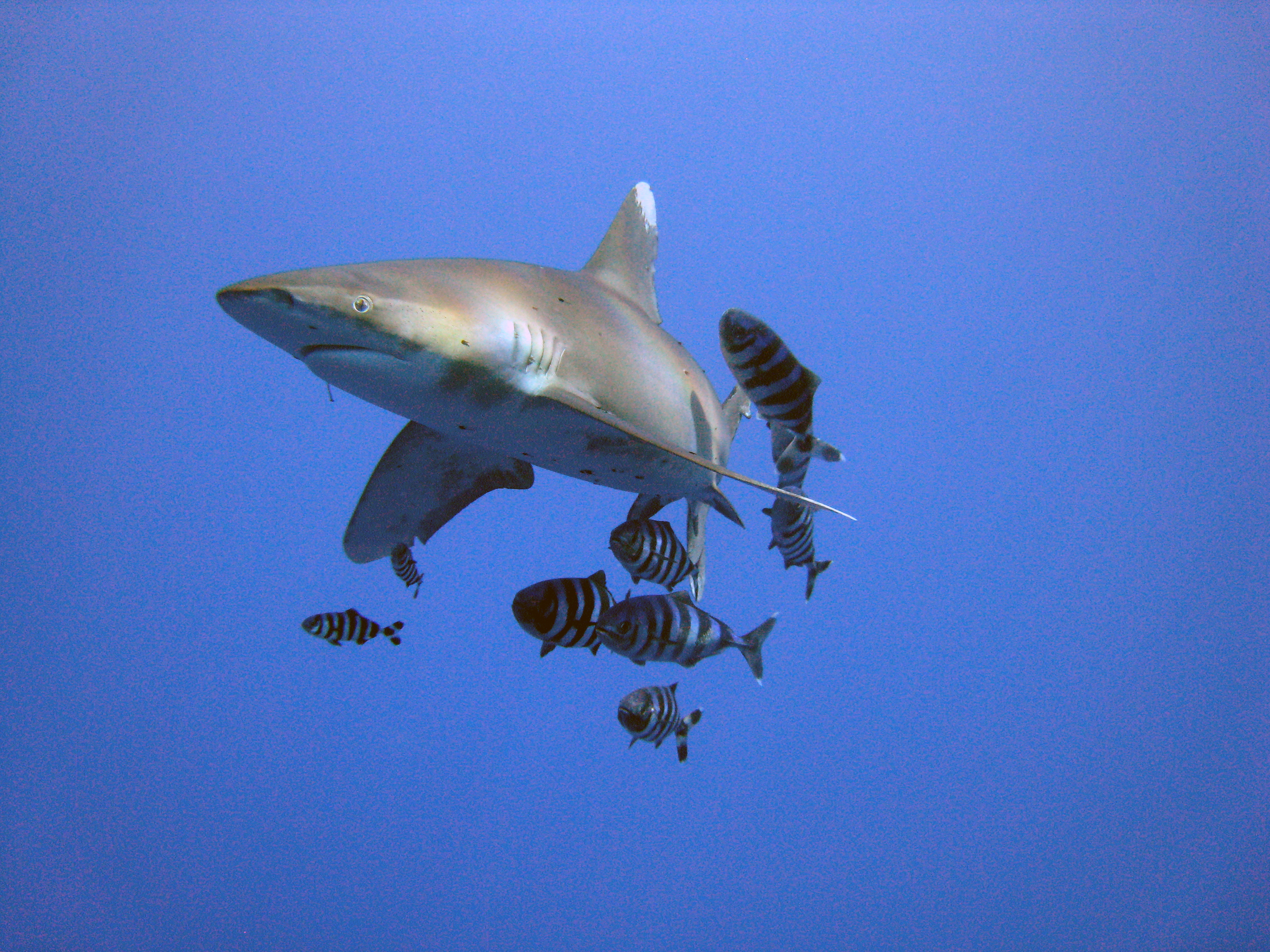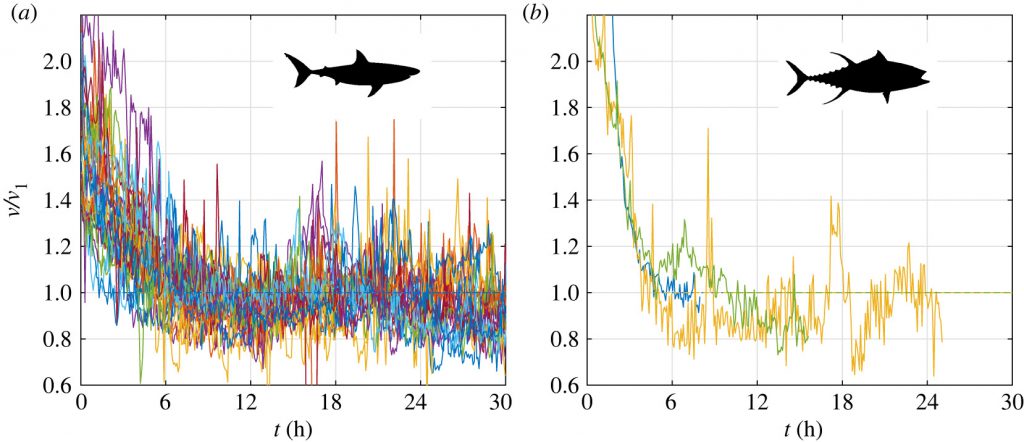How do sharks and tuna react to being caught by hook-and-line and then released? Well, they swim twice as fast as their normal cruising speed, according tot researchers at The Royal Society.
Sharks and tuna normally swim at elevated speeds relative to cruising speeds only during strenuous activity, such as hunting or escaping from danger. The researchers measured swimming speeds of 29 sharks from 10 species, such as Oceanic Whitetips, and of three Atlantic bluefin tunas immediately after exhaustive exercise, fighting a capture by hook-and-line. They did not expect to find that all individuals exhibited a uniform mechanical response, with swimming speed initially two times higher than the cruising speeds reached approximately 6 hours later.
They hypothesized that elevated swimming behaviour is a means to increase energetic demand and drive the removal of lactate accumulated during capture via oxidation.
Read the full research at The Royal Society.


